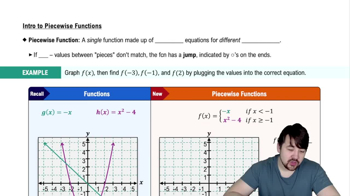Use Table 5.6 to evaluate the following definite integrals.
(d) ∫₀^π/¹⁶ sec ² 4𝓍 d𝓍
 Verified step by step guidance
Verified step by step guidance Verified video answer for a similar problem:
Verified video answer for a similar problem:



 5:43m
5:43mMaster Definition of the Definite Integral with a bite sized video explanation from Patrick
Start learning